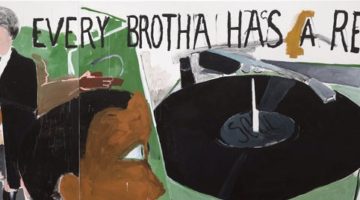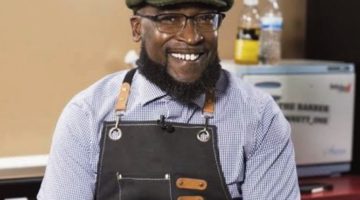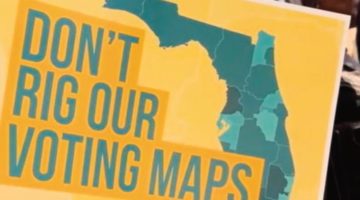Hialeah, the Florida city where 94 percent of the population identify as Hispanic or Latino, recently explored the possible annexation of several predominantly African American communities but abandoned the plan.
Alarmed by the takeover threat, those neighborhoods are demanding that the Miami-Dade County Commission allows them to establish their own city.
Meanwhile, the commission, in choosing a name for an imposing new courthouse, settled on a Cuban American, Osvaldo Soto, who led the campaign to repeal an English-only ordinance.
None of that should surprise those who have been following the history of the county and Miami, its largest city. It is not a matter of erasing or censoring African American history. Rather, it is one of being ignored as the population has grown from overwhelmingly European American to overwhelmingly Latino American.
The number of Latinos skyrocketed with the arrival of around 125,000 Cuban refugees in six months in 1980, many initially sleeping under highway passes, with President Jimmy Carter granting them asylum. The federal government spent nearly $4 billion on “resettlement, job training, housing and education programs from the 1960s through 1996” for those refugees and others who came earlier, The Miami Herald reported, citing “The Color of Wealth in Miami” report from Ohio State University. They increased from 10 percent of the population in 1960 to 49 percent a decade after the refugee influx.
The African American population remained at 20 percent, dominated first by European Americans and then the newcomers. They were 42 percent in 1910 and, down the years, they suffered not only economic and political neglect but also Ku Klux Klan (KKK) terrorism that included bombings and concerted efforts to keep them out of some neighborhoods and to silence talk about racial equality.
The KKK kidnapped an African American minister from Coconut Grove who had been preaching racial equality and released him only after he promised to return to the Bahamas. Klansmen tarred and feathered a European American Archdeacon, Philip S. Irwin, and a blacksmith, George Doty, in downtown Miami, leaving them for dead. Irwin was accused of talking about “social equality to Negroes,” according to news reports.
European American residents of Coconut Grove protested against two African American families’ plan to move into their community. Hundreds demonstrated against plans for a 250acre development for African Americans at Northwest Seventh Avenue. An upscale Bal Harbour housing complex barred lots from being “sold, conveyed, or leased to anyone not a member of the Caucasian race ….” The city of Miami evicted several African Americans from their homes to make way for two schools.
Businesses were desegregated only in 1960 after the Rev. Edward T. Graham and six other African American clergy members tried to stage a sit-in at the Burdines store in downtown Miami. That year, also, public swimming facilities were desegregated – after a federal court order following a lawsuit. Hotels were segregated until 1961, when six African American Chicago White Sox baseball players stayed at the Biscayne Terrace. That year, too, the University of Miami admitted its first African American students.
On Dec. 16, 1979, a group of European American county police officers beat Arthur McDuffie so severely that he died four days later from his injuries. An all-European American jury in Tampa acquitted the officers the following year, sparking the “Miami Riot of 1980.”
European American political and economic leaders and their African American counterparts eventually worked out a sort of social compact intended to help the latter move into the mainstream of city and county political and economic life. It was also a time when such initiatives were encouraged by federal policies, including affirmative action, which also benefited the refugees.
But The Herald’s 2023 story made it clear that not much changed for African Americans. The Latino Americans “built an insular enclave economy that, as it thrived and expanded, left little room for Miami’s Black population to move into Miami-Dade’s economic mainstream,” The Herald reported, citing experts. Further, Hurricane Andrew in 1982 “prompted a large chunk of the county’s white nonHispanic middle class to relocate to Broward.”
That allowed Latino Americans to become the dominant community. “Invested in its own survival and advancement, the Cuban and Hispanic majority spared little recognition for the historic disadvantages of Black Miamians and scant interest in ensuring they shared equally in business or politics,” The Herald reported, again citing experts.
The Herald did not explore whether racial bias has influenced the attitude of Cuban Americans towards African Americans. Tanya Katerí Hernández would argue that it does. The AfroPuerto Rican, a Fordham University School of Law professor and graduate of Yale and Bown universities, published a book on the subject in 2022, “Racial Innocence: Unmasking Latino Anti-Black Bias and the Struggle For Equality.”
Hernández knows of what she wrote. Her grandmother’s family had pressured Hernandez’s mother to put her newborn, who had dark skin and curly hair, up for adoption “as soon as possible, so that the girl’s complexion did not tarnish the ‘white’ lineage that the family had taken such care to protect, despite being descendants of Black and Indigenous enslaved peoples in Puerto Rico,” El Pais reported. Her mother refused and her own daughter – Tanya – was born with dark skin and curly hair.
Whatever the reason, no discussion of African Americans in the Miami area can ignore the role they played in establishing the city. Industrialist Henry Flager brought some of them from Georgia, along with Bahamians, to help build his Royal Palm Hotel and railroad. And 162 of them were among the 367 voters who backed Flagler’s push to incorporate Miami in 1896 –129 years ago.
That history also includes, as The Herald emphasized, the fact that “when it came to sharing the bounty from the booming Magic City they helped create, Black Miamians were shoved aside, relegated to tents and work camps and later shacks crammed into the unpaved streets of Colored Town, on the wrong side of Flagler’s railroad tracks” with the county becoming “separate and unequal” and “the 32nd most segregated” area in the U.S., “the only major Southern metro never to have elected a Black mayor in the wake of the civil rights movement.”
The story is in the numbers. The annual media income of an African American family in 1989 was $22,500. It rose to $42,081 by 2018, an increase of 87 percent. However, the median income of Latino American families rose to $56,062 or by 105 percent, over the same period. For European Americans, the increase was 213 percent, to $108,205. The Herald reported.
However, while there has evidently been little official interest in acknowledging and rewarding the contributions of African Americans to the development of the area, that has not deterred those who are determined to keep the history alive. They include Dorothy Jenkin Fields, the distinguished historian and archivist who in 1974 founded the Black Archives, History and Research Foundation of South Florida after she could not find books on local African Americans. Her favorite quote is an African proverb: “Until the lions tell their story, tales of the hunt will continue to glorify the hunter."
Retired Florida International University (FIU) professor Marvin Dunn launched an initiative to teach that history even if it means under a tree because the classrooms are officially off limits, as he did recently on the FIU campus in south Miami-Dade. The Reeves family, in 1923, helped launch a newspaper which, under their ownership, bloomed into The Miami Times – where this writer worked for nearly 15 years. It has provided a voice for the community for more than a century.
Dinizulu Gene Tinney and colleagues on the Miami-Dade Truth and Reconciliation initiative (TEAR) and other programs in the tri-county area are committed to keeping alive the memory of those who were lynched and the overall impact of racism.
Their ancestors survived being enslaved in a system of human trafficking, degradation and immeasurable suffering. They evidently know that it is essential to keep alive the past so they can continue to draw strength from it.













No Comment